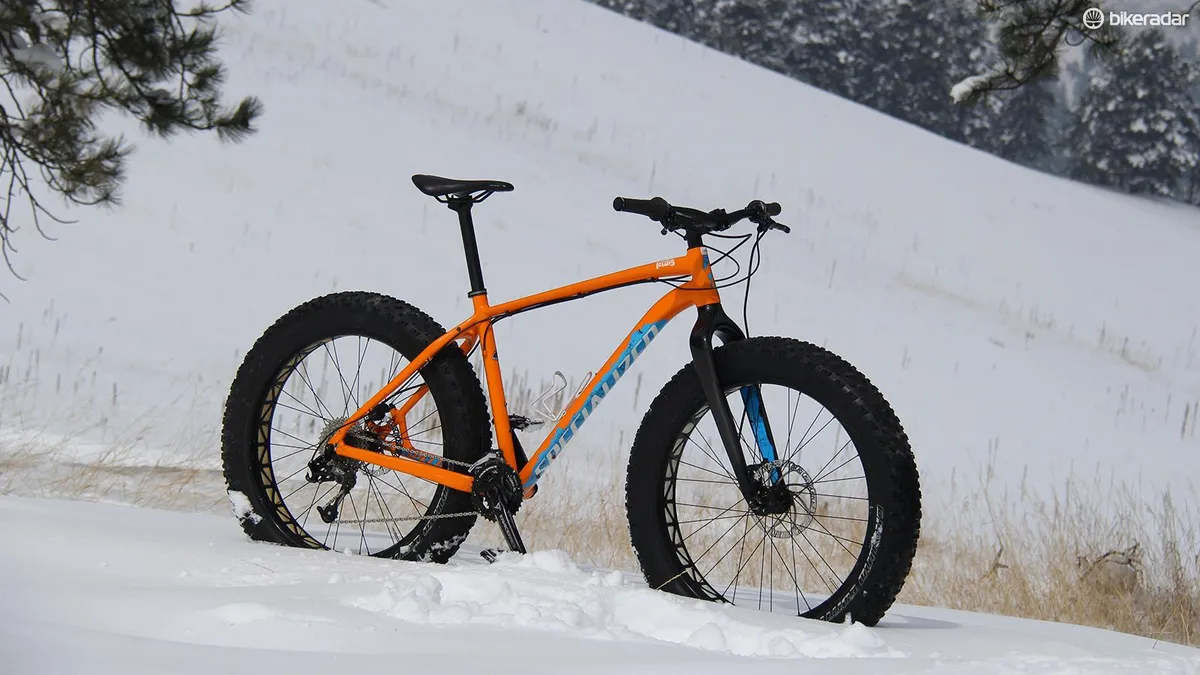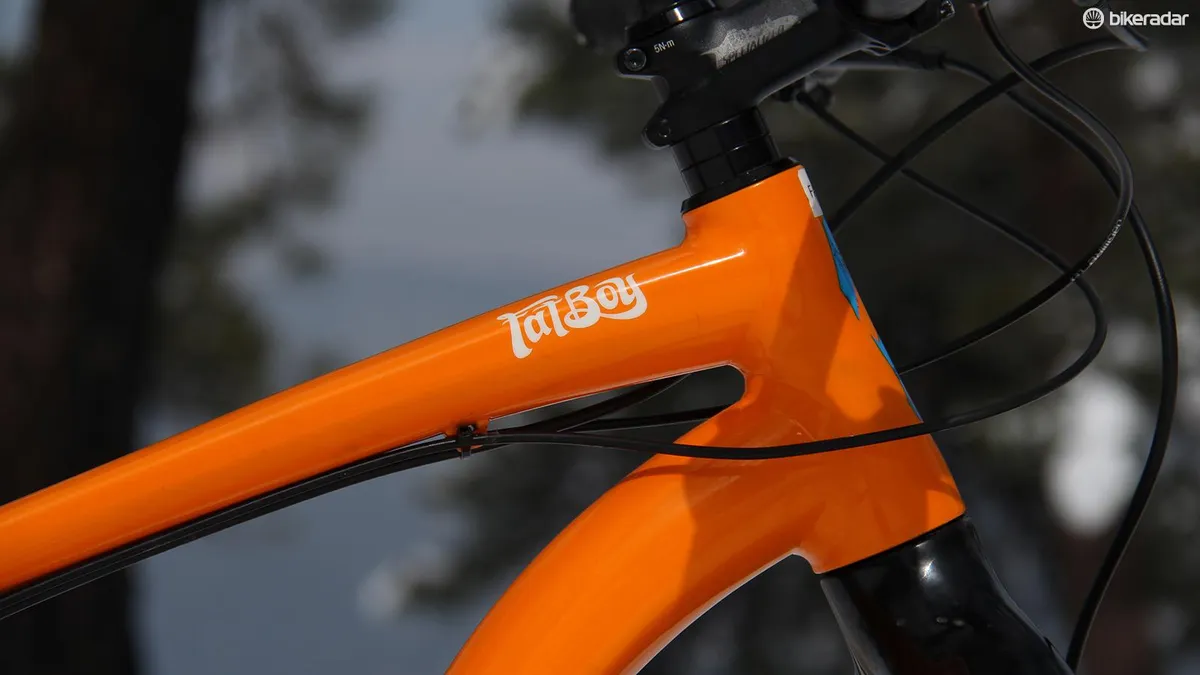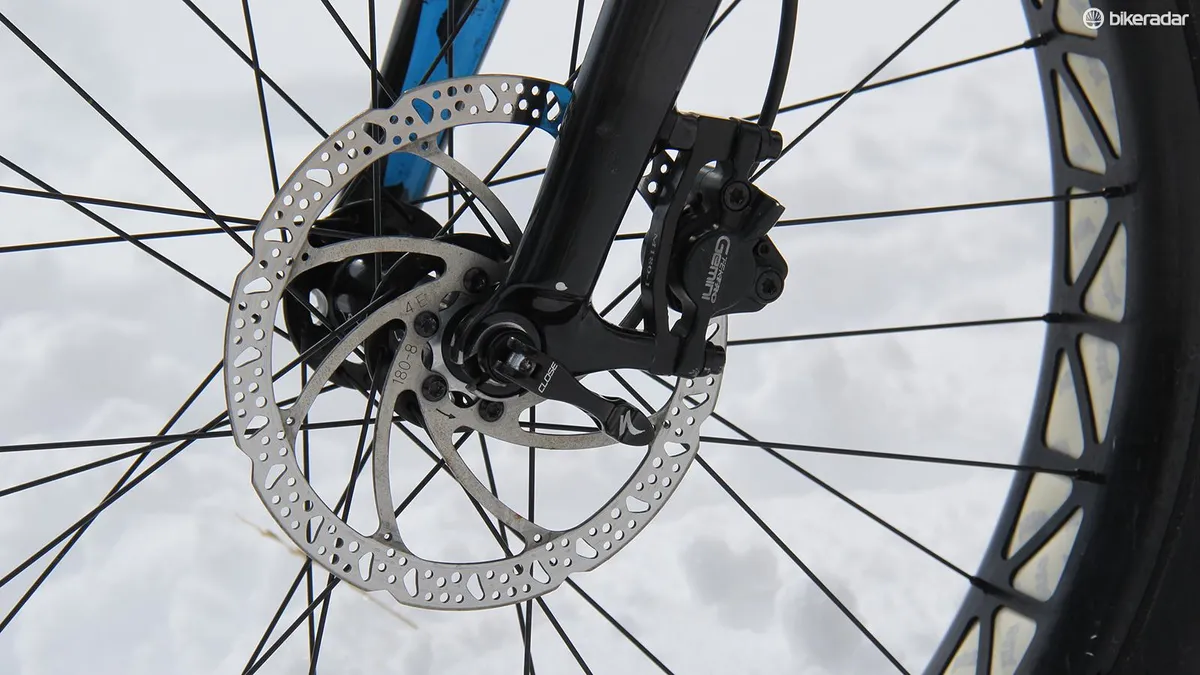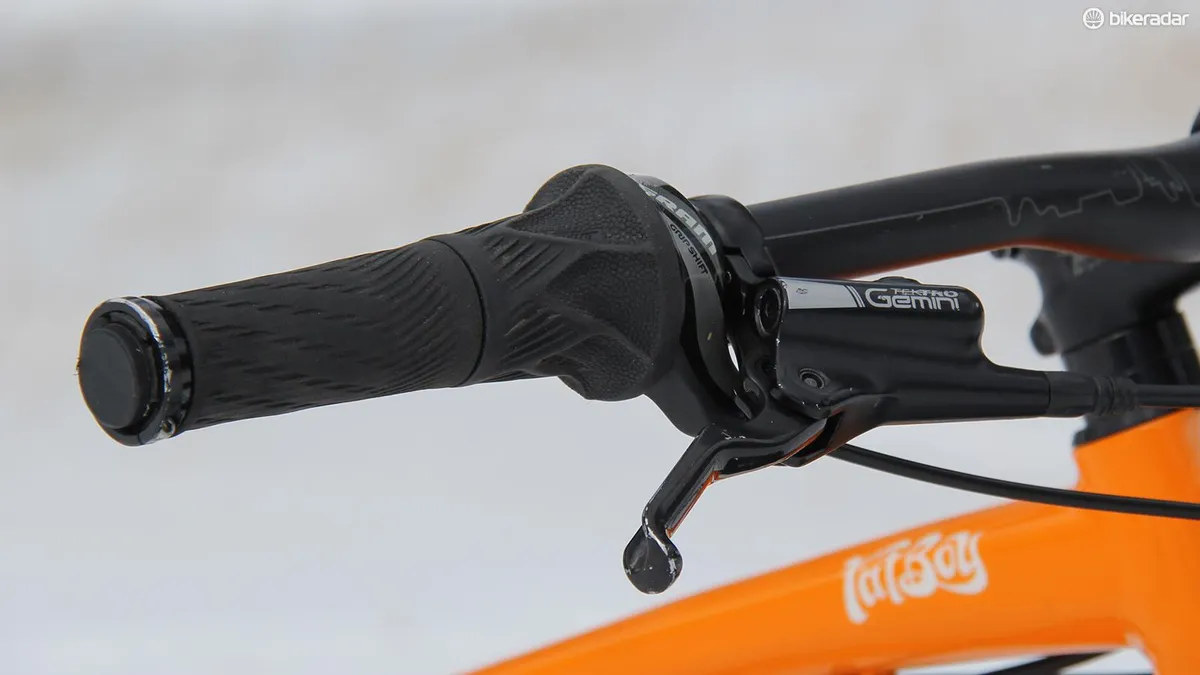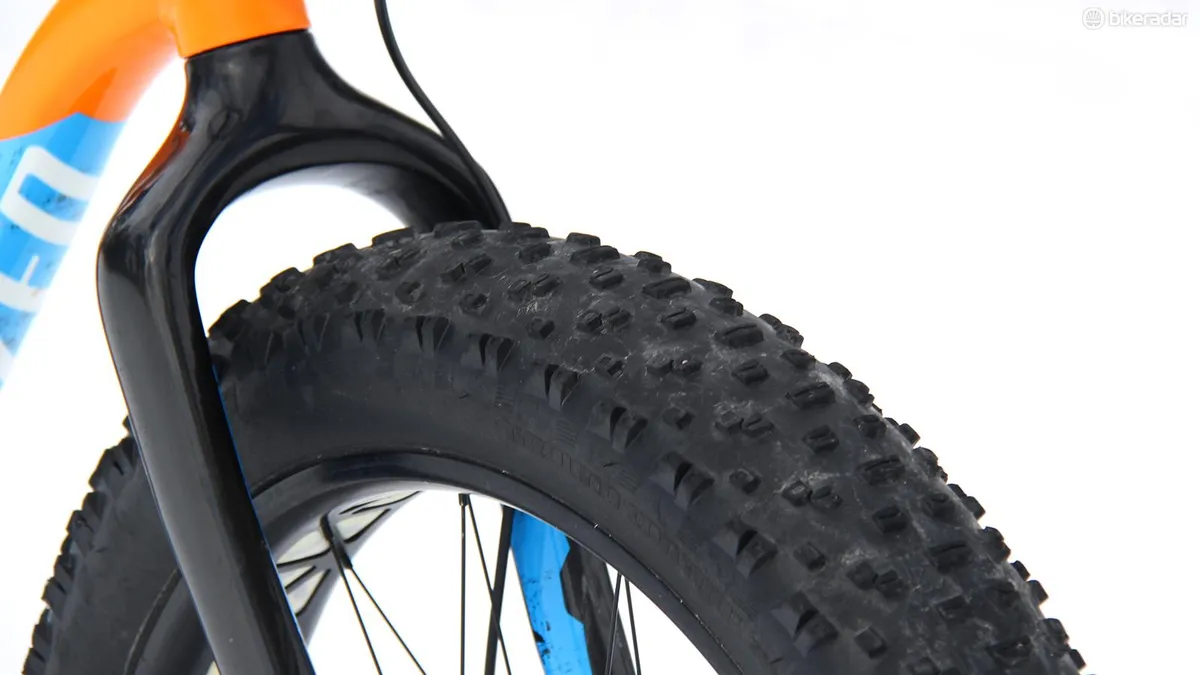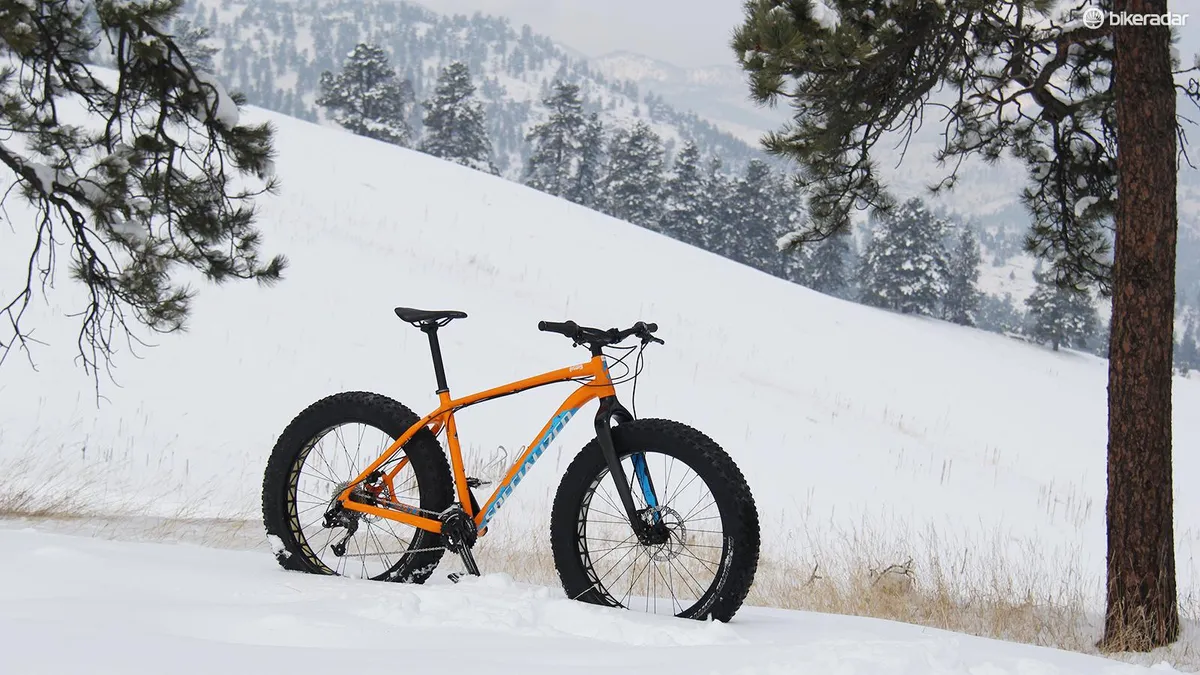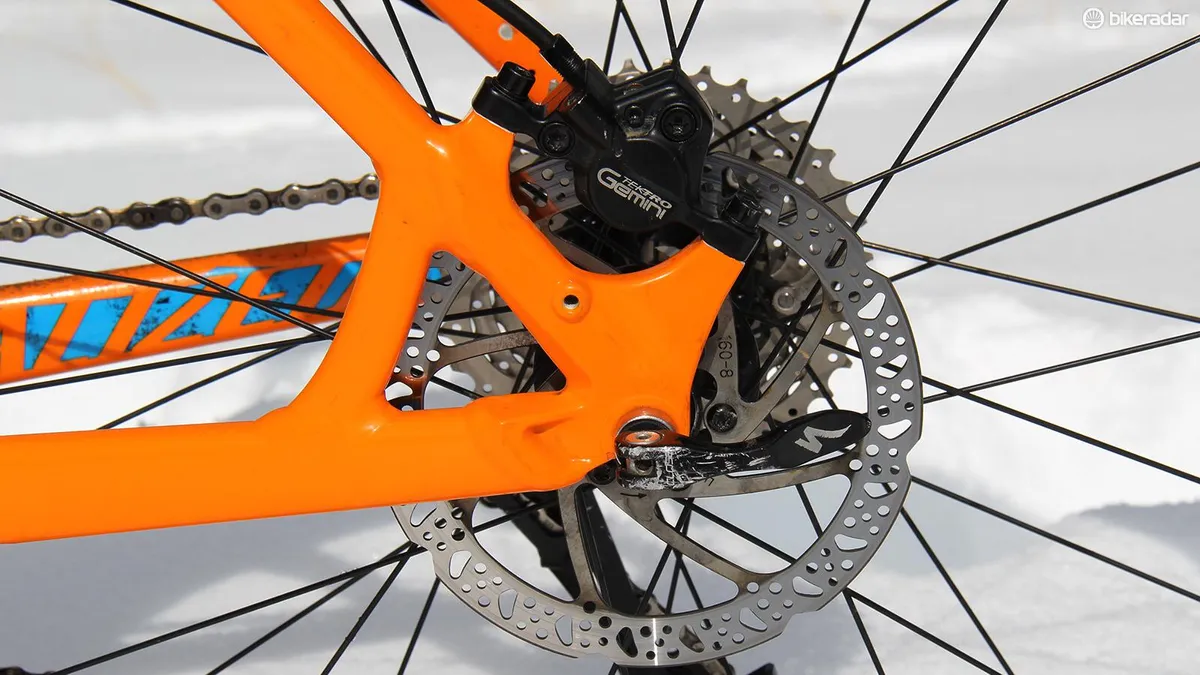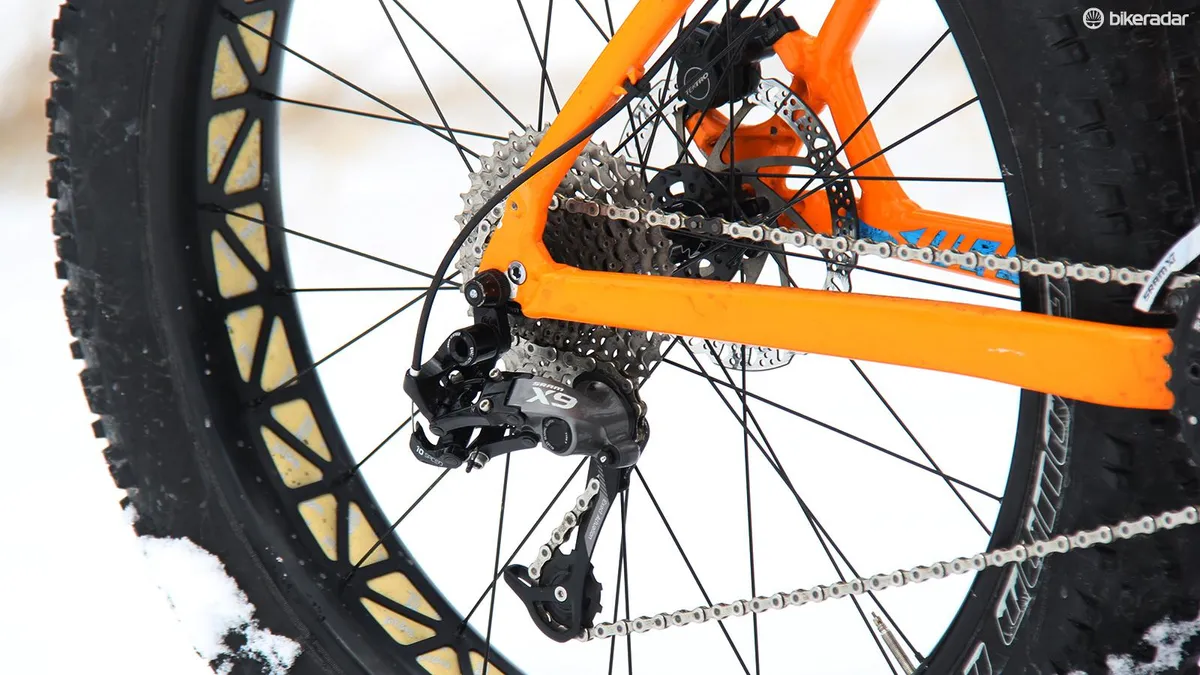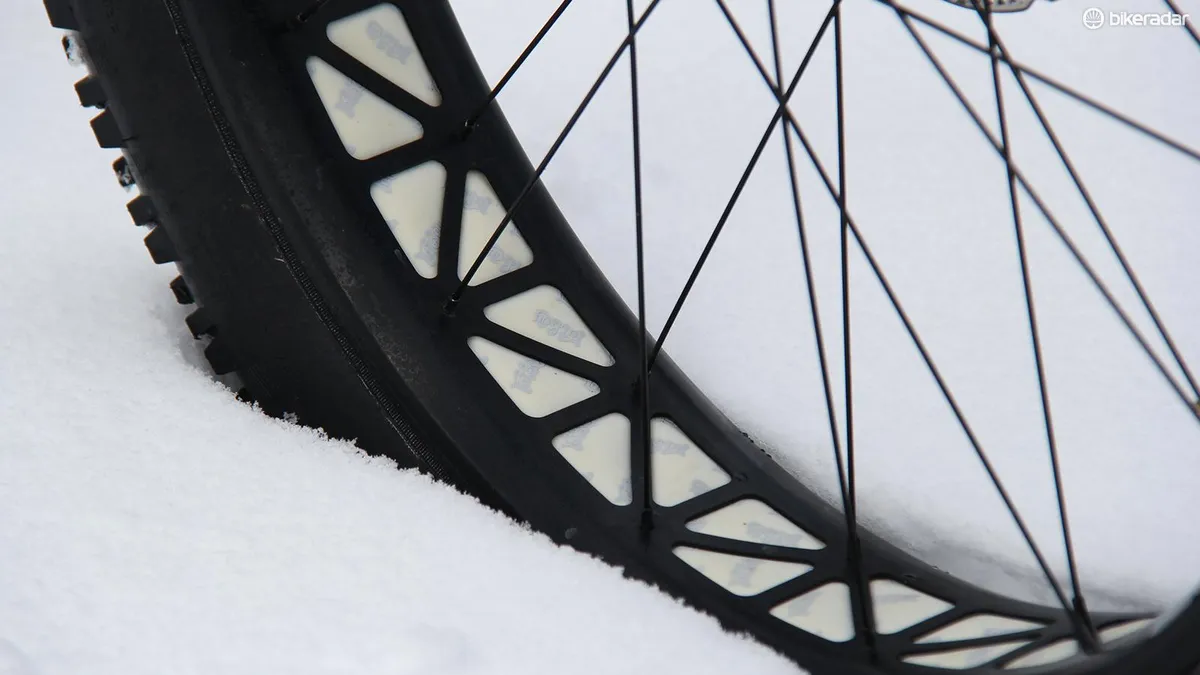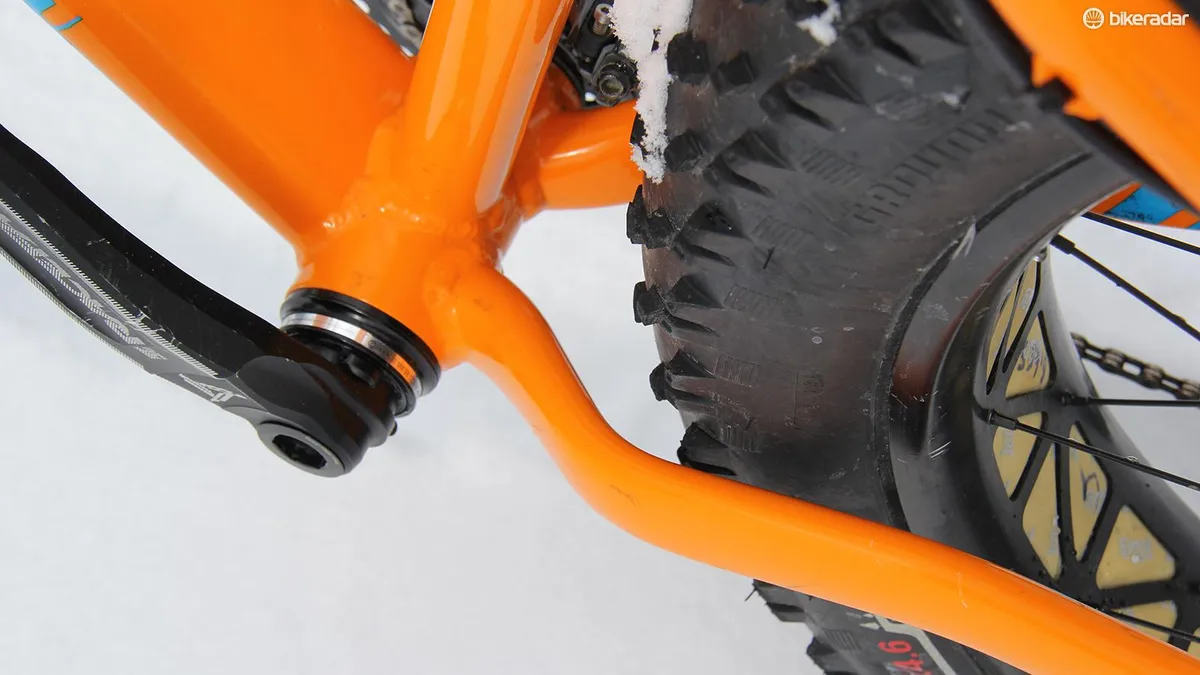Being a California-based company, Specialized may have seemed like an unlikely contender when it first rolled out the Fatboy in 2013, but Specialized saw the rapid growth of the this once tiny segment of the mountain biking market and brought its considerable engineering know-how to the table. The result is a whole family of fat bikes. Specialized can, quite literally, outfit an entire family with fat bikes — with youth versions shod in both 20in and 24in wheels and five complete 26in-wheeled models to choose from. We tested the entry-level US$2,100 Fatboy to see how it stacked up against the competition.
- Highs: Grip shift easy to use with winter gloves; supple tires provide more traction than expected
- Lows: stock brakes lack modulation; quick-release axles
- Buy if: You’re looking to try fat biking and don’t want to break the bank
Ride and handling: business up front, party in the back
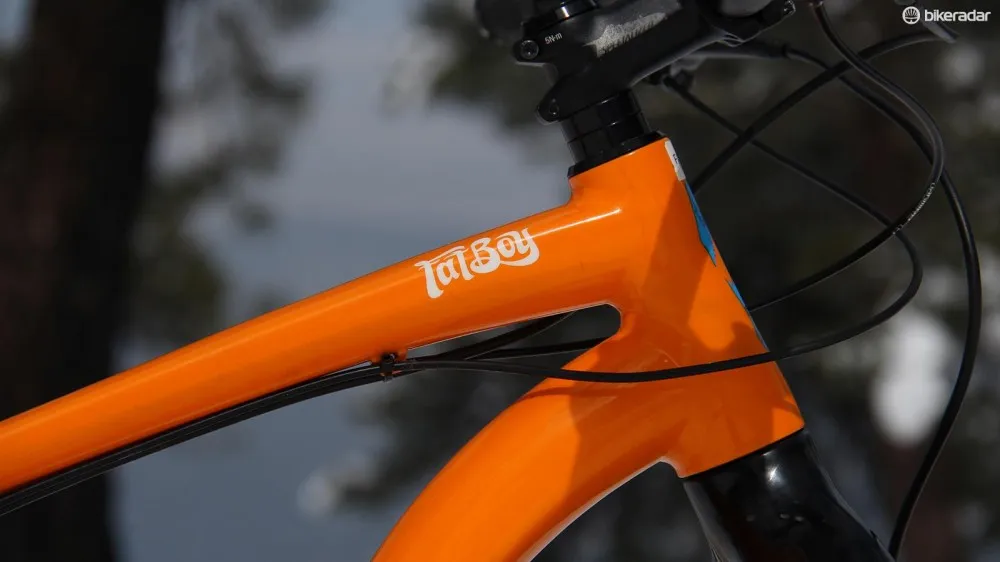
'Fatboy' was originally the name of a Specialized BMX bike
If you were around during the early days of 29er geometry (which really weren’t all that long ago) you may remember the “mullet” handling of bikes with steep head tube angles and long chainstays.
The Fatboy is quite similar in that respect. The 70.5 degree head tube angle isn’t overly steep, yet it is quick enough that the Fat Boy prefers to be steered from the bar, rather than leaned through turns by the hips and it requires extra input to muscle the rangy, 17.9 / 455mm-long chainstays through tight and twisty trails.
This geometry works well enough when pedaling through snow and sand. The long rear end delivers plenty of traction on steep climbs, allowing the rider to stay seated and spin the 38/24t crankset. The front end serves up great low-speed handling. This makes the Fatboy a good sidekick for excursions that involve a bit of trail blazing. If the trail is hidden under a blanket of snow — or if no trail exists — the Fatboy with its 26x4.6in tires can roll over just about anything.
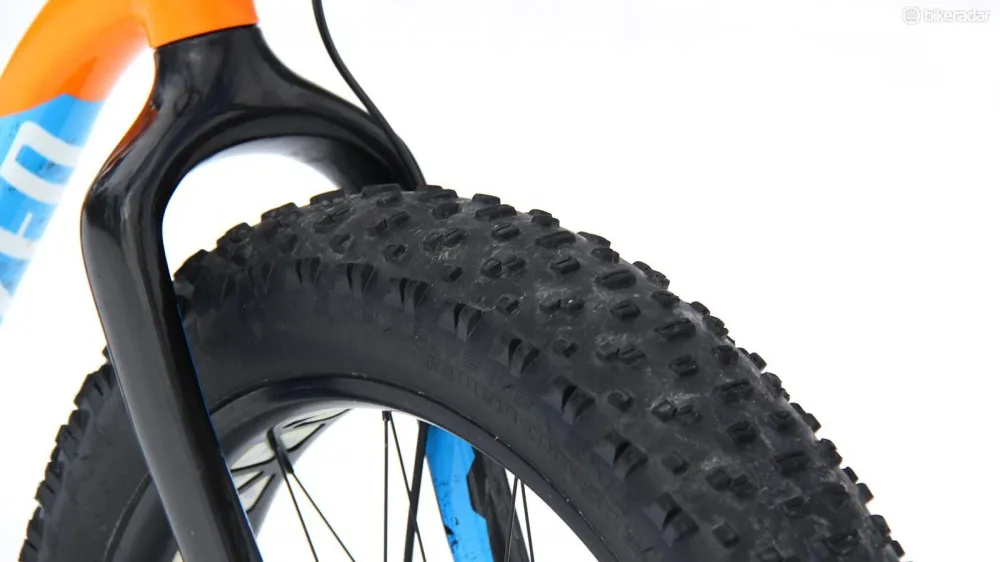
The Fatboy's carbon fork helps to keep the weight manageable
When the trails thaw and its once again time to bomb through snowless singletrack the Fatboy lacks the playful demeanor of fatbikes such as the Trek Farley. The long rear end requires more effort to loft the front wheel over obstacles, although the lightweight carbon fork does its part to lighten the load. In total, our Fatboy weighed in at 31.8lb/ 14.4kg.
Last but not least: the subtle upward arc of the top tube gives the Fatboy a handsome silhouette, but cuts down on standover clearance in deep snow.
Frame and equipment: dependable but dated
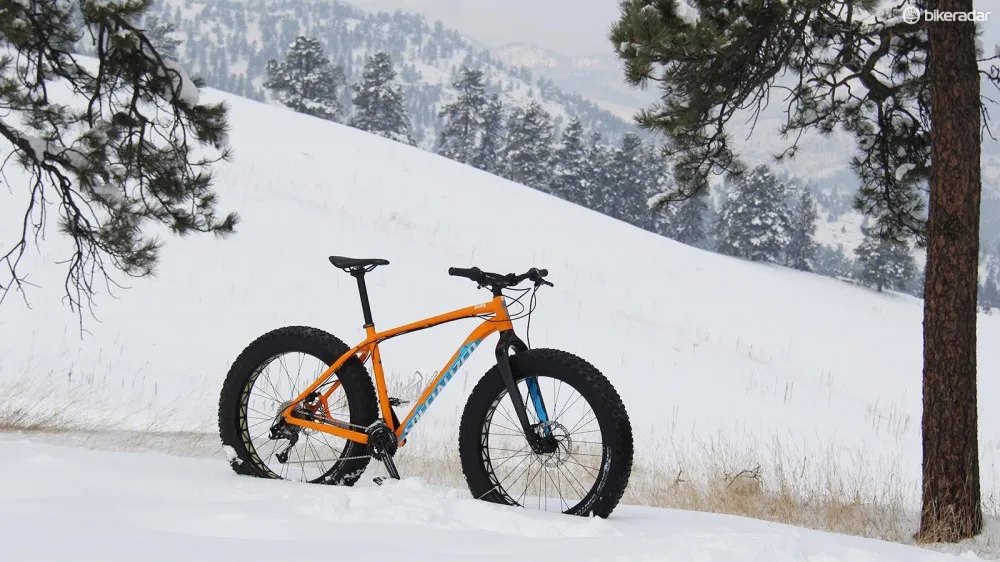
The Fatboy is a dependable fat biking partner, but it's not up to date with the current axle and fork standards
It seems like fat bike frame standards have gone through a more tumultuous development process than any other type of bicycle in recent memory. As the species matures, axle and bottom bracket standards are becoming normalized. But the growing process has been painful for consumers, unsure of what's going to come next. The Fatboy, however, is still stuck in an awkward pubescent state. It sports quick-release axles at both ends and the carbon fork is spaced at 135mm, rather than the 150mm spacing that has become the norm thanks to the introduction of the RockShox Bluto suspension fork.
The stock build consists of reliable, no-frills components that get the job done. SRAM X7 front and rear derailleurs are operated by a pair of gripshifters — a thoughtful addition that is much more user-friendly than trigger shifters when wearing thick gloves.
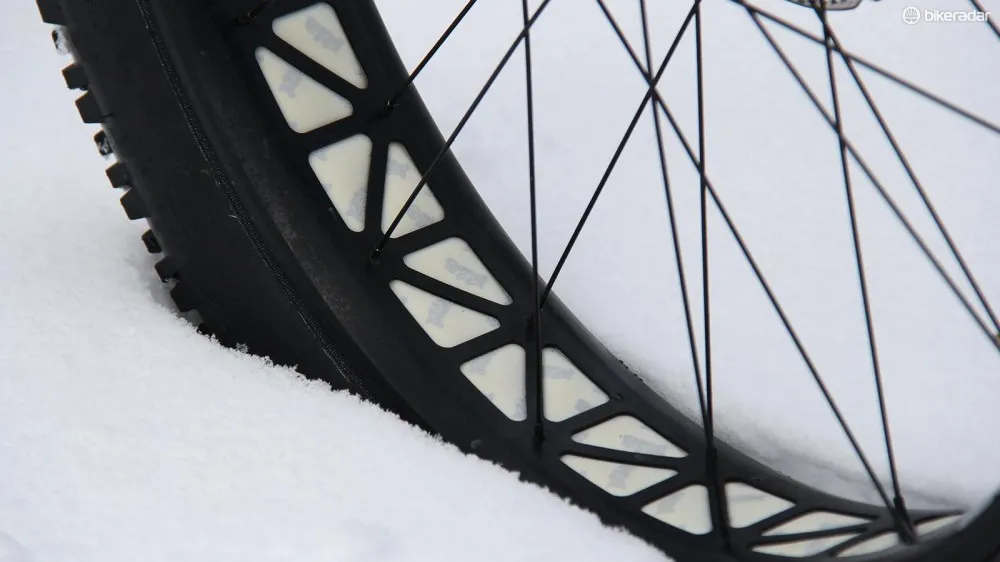
Specialized's single-walled rims use cutouts to cut down on rotating weight
The 90mm-wide, single-walled Specialized rims feature a latticework of cutouts to keep the weight down. The 26x4in Ground Control Fat tires are good medium condition options. They lack big knobs to bite into soft terrain but their supple 120tpi casings goes a long way toward providing traction and minimizing rolling resistance. Neither the rims nor the tires are explicitly tubeless compatible, but with a bit of ingenuity, some Gorilla tape, sealant and an air compressor it’s possible.
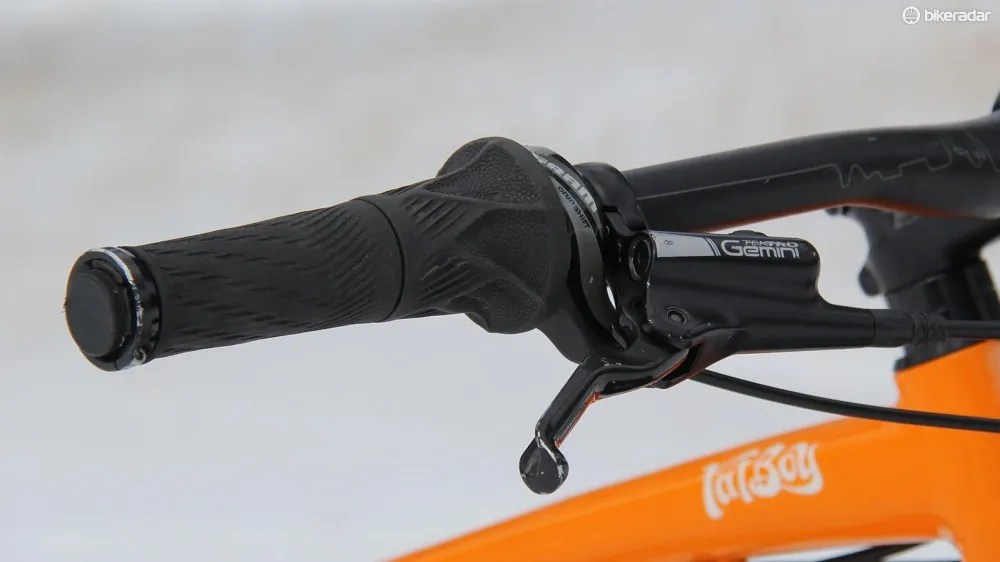
Tektro's Gemini brakes don't offer the same level of refinement as SRAM or Shimano stoppers
The only component spec that didn’t live up to expectations for the price were the Tektro Gemini hydraulic disc brakes, which they lacked both power and modulation. (We would have gladly traded the hydraulic Tektros for a pair of the always reliable Avid BB7s in exchange for a out-of-the-box tubeless rim and tire combo.)
The verdict
The Fatboy isn’t the most up-to-date fat bike on the market in terms of axle standards, but at this price, it packs a decent value into a well-built frame.
Complete bike specifications
- Frame:Specialized Fatboy
- Fork:Specialized FACT carbon, 135mm spacing
- Headset:Campy style integrated 1.125 - 1.5in
- Stem:Specialized, 3D forged alloy
- Handlebar:Specialized, low rise 6061 alloy
- Brakes:Tektro Gemini, 180mm front / 160mm rear rotors
- Front derailleur:SRAM X7, 2x10, low direct mount
- Rear derailleur:SRAM X7 Type 2, 10-speed, medium cage
- Shift levers:SRAM S-Series, Grip Shift
- Cassette:Sunrace, 10-speed, 11-36t
- Chain:KMC X10L
- Crankset:Race Face Turbine, 38/24t
- Bottom bracket:PF30
- Rims:Specialized Fatboy SL, 90mm-wide, singlewall, 32h
- Front hub: Specialized MTB Hi Lo disc, alloy, sealed cartridge bearings, 135mm wide, QR, 32h
- Rear hub:Specialized MTB Hi Lo disc, alloy, sealed cartridge bearings, 190mm wide, QR, 32h
- Spokes:Stainless, 14g
- Front tire:Specialized Ground Control Fat, 120TPI, folding bead, 26x4.6"
- Rear tire:Specialized Ground Control Fat, 120TPI, folding bead, 26x4.6"
- Saddle:Body Geometry mountain, steel rails, 143mm
- Grips:SRAM, S-Series Grip Shift
- Seatpost:Specialized alloy, 2-bolt, 12.5mm offset, 30.9mm
